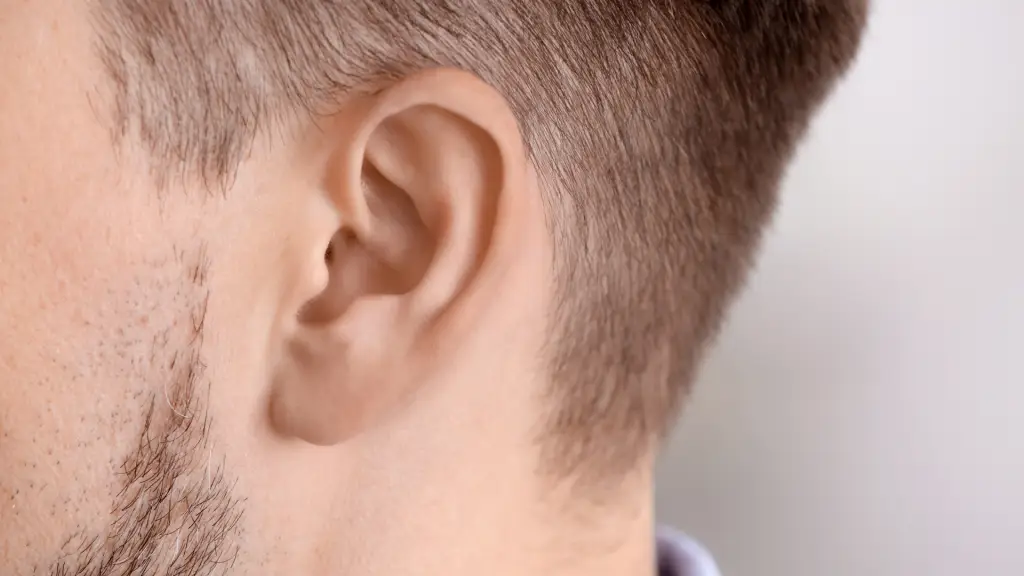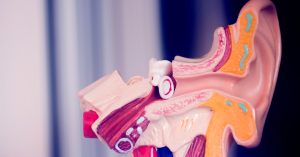Waking up and realizing you can’t hear out of one ear can be a deeply unsettling experience. Sounds may seem distant, conversations become difficult to follow, and you may feel off-balance or disoriented. This kind of sudden hearing loss in one ear can happen to anyone, often without warning—and while some causes are minor, others require immediate medical attention.
Many people are tempted to wait it out, hoping their hearing will return on its own. But with one-sided hearing loss, time is critical. In some cases, acting within 24 to 48 hours can make the difference between full recovery and permanent loss. Whether it’s due to something as simple as earwax or as serious as sudden sensorineural hearing loss (SSHL), knowing how to respond—and when to seek help—is essential.
In this practical guide, we’ll explore what might cause sudden hearing loss in one ear, how to recognize when it’s a medical emergency, what diagnostic steps to expect, and the treatment options available. We’ll also offer tips for protecting your hearing going forward so you can reduce the risk of it happening again.
Understanding Sudden Hearing Loss in One Ear
Sudden hearing loss in one ear can feel like your world shifted in an instant. One moment everything sounds normal—and the next, it’s as if someone turned down the volume on one side. This kind of hearing loss is distinct from the gradual decline many experience with age. It often occurs over a very short period—anywhere from a few hours to three days—and may or may not come with other symptoms.
What Is Sudden Hearing Loss?
Medically, sudden hearing loss refers to a rapid, unexplained reduction in hearing. When it happens in just one ear, it’s called unilateral sudden sensorineural hearing loss (SSHL). This condition affects the inner ear or the nerve pathways between the ear and the brain, and it is considered a medical emergency.
Many people first notice SSHL when they try to use the affected ear on the phone, wake up with it, or become aware of a sudden imbalance in hearing. Some experience a loud “pop” just before the hearing loss occurs, while others may simply notice it fading throughout the day.
Other Possible Symptoms
In addition to muffled or absent hearing on one side, you might also experience:
- Tinnitus (a ringing, buzzing, or hissing sound in the ear)
- Dizziness or vertigo
- A feeling of fullness or pressure in the ear
- Mild discomfort or popping sensations
These accompanying symptoms can offer important clues to healthcare providers about the cause and severity of the hearing loss.
How It Differs from Gradual Hearing Loss
Unlike presbycusis (age-related hearing loss), which typically affects both ears and worsens over time, sudden hearing loss in one ear is abrupt and usually limited to one side. It’s also different from conductive hearing loss (caused by obstructions like earwax), which blocks sound from reaching the inner ear but doesn’t involve nerve damage.
Recognizing the distinction is important—because certain causes, such as SSHL, require urgent medical treatment to preserve your hearing.
Possible Causes: From Benign to Serious
Sudden hearing loss in one ear can stem from a wide range of causes—some relatively harmless and others more serious. Understanding what might be behind the change can help you respond appropriately and seek the right type of care. Here’s a breakdown of the most common causes, from benign to medically urgent.
Earwax Impaction
Surprisingly, something as simple as earwax buildup can completely block the ear canal, making sounds seem faint or totally absent. If the wax shifts suddenly—such as after showering or sleeping on one side—you might experience instant hearing loss in that ear. Though uncomfortable, this is usually easy to treat with professional cleaning or softening drops.
Eustachian Tube Dysfunction
The Eustachian tubes help equalize pressure between your middle ear and the outside environment. When they become blocked—due to allergies, colds, or sinus infections—you might feel pressure and muffled hearing in one ear. This is typically temporary, but if it lasts more than a few days or causes pain, it’s worth getting checked out.
Ear Infections
A middle ear infection (otitis media) or outer ear infection (otitis externa or “swimmer’s ear”) can also cause sudden hearing changes. Infections often come with symptoms like ear pain, swelling, fluid drainage, or a feeling of fullness. While not typically emergencies, untreated infections can lead to complications and should be evaluated by a doctor.
Sudden Sensorineural Hearing Loss (SSHL)
This is the most concerning cause of sudden hearing loss in one ear. SSHL involves damage to the inner ear or the auditory nerve and often occurs without any obvious trigger. It may happen overnight or within a few hours, and sometimes includes tinnitus or dizziness. The exact cause is often unknown, though it may be linked to viral infections, blood flow issues, or autoimmune conditions. SSHL requires immediate medical treatment, usually with corticosteroids, to give the best chance of recovery.
Acoustic Neuroma
Though rare, an acoustic neuroma (also called vestibular schwannoma) is a noncancerous tumor that develops on the nerve responsible for hearing and balance. One of the early signs is gradual or sudden hearing loss in one ear, often accompanied by ringing or balance issues. It’s not an emergency, but early diagnosis via imaging (usually MRI) is crucial for monitoring or treatment.
Circulatory and Neurological Issues
In some cases, sudden hearing loss may be linked to stroke, multiple sclerosis, or other neurological or vascular problems that affect blood flow to the inner ear. These are much less common but should be considered if hearing loss is accompanied by other neurological symptoms like facial drooping, slurred speech, or limb weakness.
When to Seek Immediate Medical Attention
Not all hearing loss is an emergency—but sudden loss of hearing in one ear should always be taken seriously. While it could be caused by something minor like wax buildup or congestion, it could also be the early sign of sudden sensorineural hearing loss (SSHL) or another serious condition. Knowing when to act—and how quickly—is critical for preserving your hearing.
Red Flags That Require Urgent Care
You should seek immediate medical attention (ideally within 24 to 48 hours) if you experience any of the following:
- Sudden loss of hearing in one ear with no obvious cause (like water or wax)
- Tinnitus (a ringing or buzzing sound in the affected ear)
- Dizziness or vertigo
- Ear fullness or pressure without improvement
- Facial weakness or numbness
- Hearing loss that occurs after a recent viral illness, head injury, or loud noise exposure
These signs could point to SSHL, an acoustic neuroma, or even a vascular or neurological event. Delaying treatment—even by a day or two—can significantly reduce the chances of full recovery.
Where to Go First
If your symptoms are severe or came on very suddenly, don’t wait for a routine appointment. You can start by visiting:
- An ENT (ear, nose, and throat specialist) – best equipped to evaluate ear-related symptoms
- A primary care doctor – who can refer you to an ENT or order preliminary tests
- An urgent care clinic or emergency room – especially if symptoms occur at night or on weekends
Let the provider know clearly: “I suddenly lost hearing in one ear.” This will help them prioritize your care appropriately.
Why Speed Matters
In cases like SSHL, the standard treatment is oral or injected corticosteroids to reduce inflammation in the inner ear. These medications are most effective when started within the first 48 hours after symptom onset. If you wait too long, permanent hearing loss becomes much more likely.
Some forms of hearing loss, such as those linked to circulation problems or autoimmune responses, also benefit from early medical intervention.
What to Expect at Your Medical Appointment
Once you’ve sought care for sudden hearing loss in one ear, your healthcare provider will begin the process of diagnosing the cause. This evaluation is designed to determine whether your hearing loss is conductive (related to sound not reaching the inner ear) or sensorineural (related to nerve or inner ear damage), which directly informs your treatment options.
Medical History and Symptom Review
The first step is a detailed discussion of your symptoms. The provider may ask:
- When did the hearing loss begin?
- Was it sudden or gradual?
- Is there any pain, pressure, or ringing?
- Have you been sick recently or exposed to loud noise?
- Do you have a history of ear problems, head injury, or neurological conditions?
These questions help the doctor rule out temporary causes and determine if urgent treatment is needed.
Physical Ear Examination
Using an otoscope, the provider will look into your ear canal to check for:
- Earwax buildup
- Signs of infection
- Perforated eardrum
- Foreign objects
This simple step can sometimes reveal a clear, treatable cause like wax impaction or fluid buildup.
Hearing Tests
If the ear canal appears normal and the cause isn’t obvious, you’ll likely undergo one or more audiological tests, such as:
- Pure-tone audiometry – You’ll wear headphones and respond to sounds at different volumes and pitches.
- Speech audiometry – You’ll be asked to repeat spoken words to assess how well you understand speech.
- Tympanometry – Measures how your eardrum responds to pressure changes to identify middle ear problems.
These tests help determine the type and severity of your hearing loss and guide whether treatment should be medical, surgical, or supportive.
Imaging Tests
If there’s concern about more serious issues—like an acoustic neuroma, vascular conditions, or neurological disorders—your doctor may order imaging, such as:
- MRI (Magnetic Resonance Imaging) – The gold standard for identifying tumors or nerve issues
- CT scan – Sometimes used to check for structural problems in the ear or skull
Imaging isn’t always necessary but plays a key role when symptoms suggest deeper causes.
Referral to Specialists
Depending on the findings, you may be referred to:
- An ENT (otolaryngologist) for further evaluation or treatment
- An audiologist for advanced hearing testing or hearing aid consultation
- A neurologist if nerve involvement is suspected
The goal of this thorough process is to identify the cause quickly and accurately so treatment can begin—especially if there’s a limited window to prevent permanent hearing damage.
Treatment Options Based on Diagnosis
Once your healthcare provider identifies the cause of your sudden hearing loss in one ear, treatment can begin—often immediately. The right treatment depends entirely on whether the hearing loss is conductive (outer or middle ear issues) or sensorineural (inner ear or nerve damage). Here’s what you can expect based on the most common diagnoses.
Steroid Therapy for SSHL
If you’re diagnosed with sudden sensorineural hearing loss (SSHL), the first-line treatment is typically oral or injected corticosteroids. These medications reduce inflammation and swelling in the inner ear and are most effective when started within 48 hours of symptom onset.
- Oral steroids (like prednisone) may be prescribed for 1–2 weeks.
- In some cases, intratympanic steroid injections—delivered directly into the middle ear—are used, especially if oral steroids don’t help or can’t be tolerated.
The earlier treatment starts, the better the chance of full or partial recovery. Delayed treatment significantly reduces the odds of restoring hearing.
Antibiotics or Antifungals for Infections
If your hearing loss is caused by a bacterial ear infection, antibiotic ear drops or oral antibiotics will likely be prescribed. For outer ear infections (swimmer’s ear), topical drops usually resolve symptoms within a few days.
In rarer cases of fungal infections, antifungal treatments may be needed. Clearing the infection often restores normal hearing.
Earwax Removal
If an impacted earwax plug is the culprit, hearing can be restored quickly—often within minutes—after safe removal. Doctors may use:
- Irrigation with warm water or saline
- Suctioning with a small vacuum tool
- Manual removal using a curette under magnification
Never attempt to remove wax with cotton swabs or sharp objects, as this can push it deeper or damage the ear.
Treatment for Eustachian Tube Dysfunction
For pressure-related hearing loss due to Eustachian tube dysfunction, treatments might include:
- Decongestants or nasal steroids
- Antihistamines if allergies are involved
- Autoinflation (gently blowing with your nose pinched to equalize pressure)
This type of hearing loss usually resolves on its own within a few days to a week, but persistent cases may require an ENT’s intervention.
Managing Long-Term or Permanent Loss
If hearing loss is confirmed to be permanent—due to inner ear damage, an acoustic neuroma, or untreatable SSHL—you’ll be guided through options such as:
- Hearing aids – Amplify sound and improve speech understanding
- CROS/BiCROS hearing systems – Specialized for single-sided deafness
- Cochlear implants – For severe or profound loss when hearing aids aren’t effective
- Bone-anchored hearing systems (BAHS) – An option if traditional hearing aids can’t be used
Your hearing specialist will recommend a solution tailored to your lifestyle, preferences, and remaining hearing ability.
How to Protect Your Hearing Moving Forward
Experiencing sudden hearing loss in one ear is a wake-up call—one that often leads people to reevaluate how they care for their hearing. Whether your hearing returned fully or you’ve adjusted to permanent changes, taking steps to protect your ears going forward can help preserve your hearing health for years to come.
Avoid Excessive Noise Exposure
Noise-induced hearing damage is a leading cause of both gradual and sudden hearing loss. To protect your ears:
- Use earplugs or noise-canceling earmuffs in loud environments (concerts, sporting events, industrial workplaces)
- Lower the volume when using headphones or earbuds
- Follow the 60/60 rule: Listen at no more than 60% volume for no more than 60 minutes at a time
- Be cautious with power tools, lawn equipment, or gunfire—always wear protection
Even a single loud event can cause irreversible damage to your hearing nerves.
Manage Chronic Health Conditions
Health problems like diabetes, high blood pressure, and circulatory issues can affect blood flow to the inner ear, increasing your risk for sudden or progressive hearing loss. Keep these conditions well-managed with:
- Regular checkups
- A heart-healthy diet
- Proper medications
- Routine physical activity
Don’t Ignore Early Symptoms
Many people brush off early signs of hearing loss—like difficulty following conversations or needing to turn up the TV. But early detection is key. Schedule a hearing test if you notice:
- New or worsening tinnitus
- Muffled or distorted sounds
- Difficulty hearing in one ear
- Trouble understanding speech in noisy settings
Catching issues early opens the door to more effective treatments and better outcomes.
Stay Up to Date on Hearing Exams
If you’ve experienced sudden hearing loss once, you may be at higher risk for it to happen again. Regular hearing screenings—every 1–2 years or sooner if symptoms return—help monitor your auditory health and provide peace of mind.
Keep Your Ears Clean, Safely
Avoid the temptation to use cotton swabs or foreign objects to clean your ears. Instead:
- Let earwax work its way out naturally
- Use ear drops (only with doctor approval)
- See a professional if you feel blocked or notice hearing changes
Improper cleaning can lead to damage, infection, or further hearing loss.
Conclusion
Sudden hearing loss in one ear can feel alarming—but it’s not something you should try to “wait out.” While some causes are minor and easily treated, others require immediate medical attention to prevent permanent damage. Acting quickly—especially within the first 24 to 48 hours—can make all the difference in whether your hearing returns or is lost for good.
Whether your hearing loss was caused by a simple earwax blockage or a more serious issue like sudden sensorineural hearing loss (SSHL), the key is understanding the signs, seeking the right kind of care, and following up with appropriate treatment. And if the loss turns out to be permanent, today’s hearing technology and rehabilitation strategies can help you adapt and continue enjoying life with confidence.
Remember, your ears are just as important as your eyes or teeth—don’t wait until something goes wrong to start paying attention. If you ever suddenly can’t hear out of one ear, don’t delay. Get checked, get treated, and give yourself the best chance at recovery.
FAQ
What should I do if I wake up and can’t hear out of one ear?
Don’t wait—schedule a medical evaluation immediately. Sudden hearing loss in one ear could be a sign of sudden sensorineural hearing loss (SSHL), which is a medical emergency. The best outcomes occur when treatment, usually steroids, begins within 24 to 48 hours of symptom onset.
Can stress cause sudden hearing loss in one ear?
While stress itself is not a direct cause, it can contribute to underlying conditions—such as circulatory issues or autoimmune responses—that may increase the risk of sudden hearing loss. High stress levels can also worsen symptoms like tinnitus or dizziness.
Is sudden hearing loss in one ear always permanent?
Not always.






